Sensors for gas boilers: types, operating principles, characteristics
A modern gas boiler is a complex engineering unit used to heat water and residential premises.Special sensors for gas boilers help control and connect the operation of all its mechanisms. It is worth understanding their principle of operation. Do you agree?
It is thanks to the sensors that the key principles of operation of gas equipment are observed - safety and automation of work are ensured. The article we presented describes in detail all types of these compact devices and the features of their installation. With our advice, you can equip your boiler flawlessly.
The content of the article:
Main types of sensors
The main principle of operation of all sensors is signal conversion and interpretation of the result to promptly inform the user about changes in the operation of the gas boiler.
Gas equipment is equipped with a set of additional equipment, thanks to which it can be programmed for operation in a certain mode.
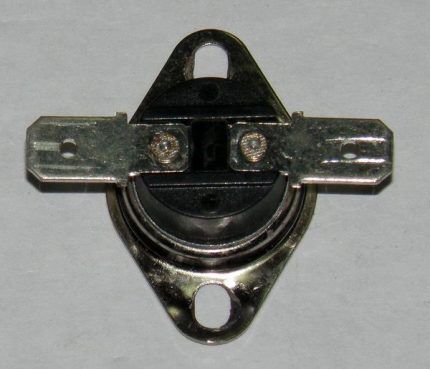
Key sensors responsible for equipment safety:
- traction;
- temperatures (outdoor and room);
- flame;
- pressure sensors (pressostat);
- overheating
Let's consider the characteristics and operating features of each of them.
To determine the traction force in the device, a traction sensor or thermal relay is used to gas boiler, he is also responsible for the correct combustion of gas.
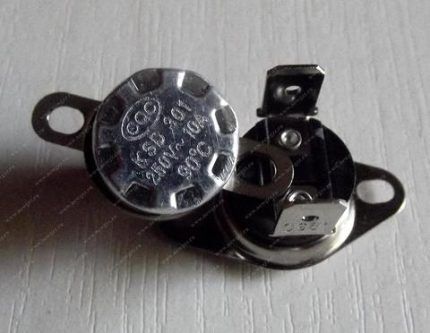
Draft is necessary to rid the boiler of carbon monoxide. Normal draft “removes” combustion products from the room, and not into it; weak draft can provoke attenuation of the column and, as a result, an accident.
Most often, such sensors are installed in a smoke extractor. If the sensor breaks down, smoke from combustion products enters the room and poses a threat to life safety.
The type of sensor depends on the type of boiler you want to connect it to. The first type is boilers with natural draft, the second - with forced draft.

In devices with natural draft, the combustion chamber is open. During normal operation, carbon monoxide escapes through the chimney, and a safety thermostat monitors the presence of draft and the temperature of the flue gases. In such boilers, a sensor is used in the form of a metal plate with a contact attached to it.
The principle of its operation is to send a signal to the valve, which at the right moment will shut off the gas flow to the burner. Inside the thermostat there is a metal strip that reacts to changes in temperature.
The thermostat is adjusted to a certain temperature in accordance with the fuel in the boiler. If natural gas is used, then the temperature limits will be from +75 °C to +950 °C, in the case of liquefied gas - +75-+1500 °C.
If there is a malfunction in the process of carbon monoxide escaping (through the chimney to the street), in other words, the traction force is disrupted, then the device is triggered. When this happens, the temperature inside the apparatus rises, the metal expands, the sensor is triggered and the boiler cools down.
Owners of gas appliances with natural draft should pay attention to the concept of “reverse draft”. In simple words, this is a process in which carbon monoxide enters the room rather than being discharged into the chimney.
Failure occurs when temperatures fluctuate, incorrect installation of the chimney or its clogging, and inaccurate calculations of the dimensions of the chimney can also affect it. Regardless of the cause of backdraft, it must be eliminated immediately in order to avoid carbon monoxide poisoning.
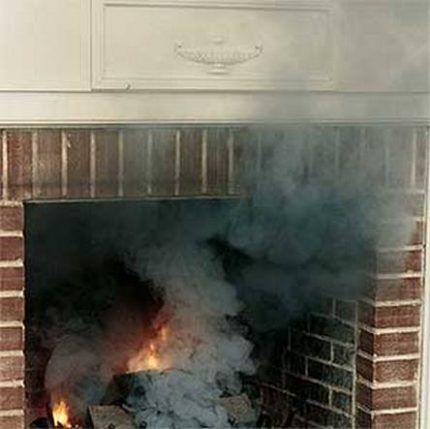
In devices with forced draft, a closed combustion chamber is installed and the gas is removed by a turbine-fan. A pneumatic relay sensor made in the form of a membrane is used here.
With normal draft, the membrane is slightly deformed under the force of carbon monoxide. When the flow becomes too weak and the membrane remains motionless, the contacts are disconnected and the gas valve closes. Such a sensor controls both the operation of the fan and the speed of combustion products.
If there are doubts about the operation of the device that interrupts the gas supply in the event of a leak, it is advisable to install a carbon monoxide sensor. Its installation is strongly recommended, but not required.
Reasons for the draft sensor to be triggered: errors in the installation of the boiler or chimney, clogged chimney or fan stoppage (only in devices with forced draft).
The operating principle and design of the gas boiler automation system are described in detail in the next article, which we recommend that you familiarize yourself with.
Operating principle of the pressure switch
A pressure switch or pressure sensor protects the boiler from overheating during a sudden change in gas pressure or a decrease in water flow.
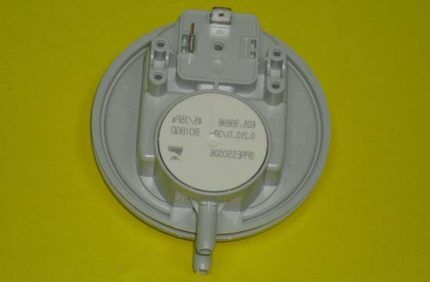
Visually, this is a standard electrical sensor or relay, in most cases with two electrical corrector circuits. It is these circuits that determine the two key operating modes of the device:
- 1 mode assumes normal pressure, during which the thermostatic membrane of the sensor does not change location and the first group of contacts closes. The boiler operates normally due to the passage of current through this circuit. It is also always connected to the general circuit of the unit.
- 2 mode The mode is activated when some system parameter is out of normal range. Inside the relay, the thermostatic membrane shifts and bends. The first circuit of the controller is disconnected thanks to the membrane, and the second is closed. Boiler equipment stops working correctly. The operation of the standby mode, informing the boiler user about an emergency, is activated using the secondary circuit of the sensor.
The sensor is triggered even if there is the slightest increase in temperature in the combustion chamber. It monitors the minimum/maximum value of the pressure force, and also registers the beginning of moisture condensation in the combustion products or directly in the gas itself.
What does the overheat sensor monitor?
An overheating sensor is a small device that protects a gas boiler from boiling, which can occur when the temperature rises above +100 °C.When the limit temperature in the heating circuit is reached, the overheating sensor disconnects the contacts and turns off the gas appliance.
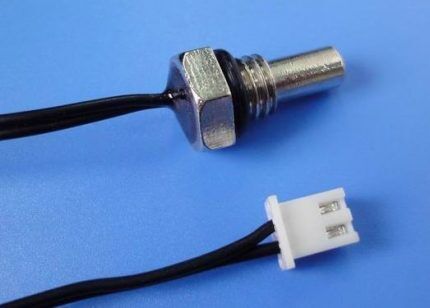
The device is based on either thermistors or biometric plates, sometimes these can be working NTC sensors.
Causes of gas boiler overheating and options for eliminating them:
- Lack of circulation in the heating circuit due to clogged filters. It is necessary to carefully clean all filters, rinse them or, if necessary, replace them with new ones.
- “Airing” of the heating circuit. You can get rid of it by simply removing the air.
- The duct is clogged due to a large layer of scale, and the boiler can be heard as if it is “knocking” or making popping noises. Remove excess in the device using special chemicals or acids.
- When starting the boiler, noise sounds are heard and the device may display an “insufficient circulation” error. A similar situation is possible when starting up the boiler, after its long-term downtime and without first running the ventilation system. The cause may be clogging in the pump due to inactivity. You need to disassemble the pump and wash it thoroughly, and then start it again.
- The equipment installation location was chosen incorrectly. In this case, if the air humidity or low temperature in the room is high, the metal from which the boiler is made will begin to quickly deteriorate.
For any reason of overheating, it must be removed immediately to avoid boiler failure or explosion. The user can get rid of overheating either independently or using the services of an experienced technician.
Outdoor and room temperature sensors
The main task of a temperature sensor for a gas boiler is to control the temperature and timely inform about its changes. Modern response devices operate on the principle of electrical resistance, which allows recording of operating readings.
According to the method of transmitting information, temperature sensors are:
- wired (connected to the controller using a cable);
- wireless (wireless radio communication is used to transmit the signal; such models consist of 2 parts).
According to the type of control they are divided into simple (maintain room temperature) and programmable (there are many functions available that allow you to influence the thermal conditions in the house).
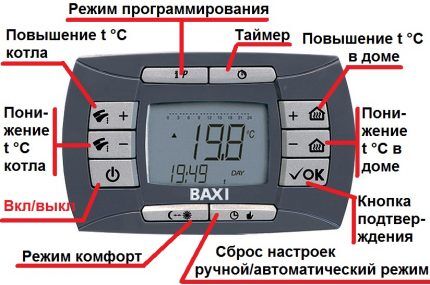
Some sensor models have a built-in thermostat that allows you to control the humidity level in the room. There is also a function to reduce/increase humidity.
Depending on the placement method, the following devices are distinguished:
- invoices – attached to the heating circuit pipes;
- submerged – are in constant contact with the coolant.
Wherein indoor located directly in the room, and street are installed outside and respond to temperature changes outside the window.
The first two types are used for coolant, i.e. for the boiler, and the second two are for controlling the air temperature. Overlays are mounted on the outer surface of the pipeline using a special tape or clamp.
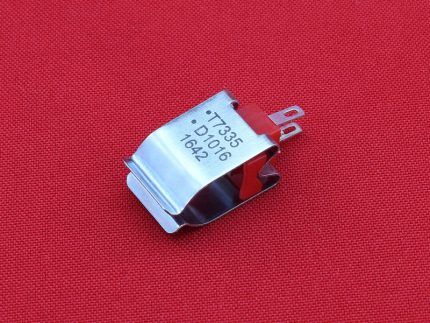
Submersible water heating sensors for the boiler are placed only in special places inside the device in close proximity to the coolant.
The response element for measuring temperature degrees can be an electrical transducer (thermocouple, resistance thermometer), pre-configured to a certain range. Such devices may have a display; some models have the ability to be calibrated in advance.
An outdoor temperature sensor allows the boiler to operate not all the time, but only when necessary. This increases the service life of the gas boiler and the consumption of gas itself. When installing it, protection from mechanical and weather (moisture, frost) influences should be provided in advance.
The set of remote equipment includes:
- the sensor itself;
- terminals for clamping electrical cables;
- cable sleeve;
- a plastic case that will contain all the parts of the device.
When the temperature outside the window changes, the gas boiler sensor triggers a weather-dependent program that makes changes to the temperature regime for heating water for heating.
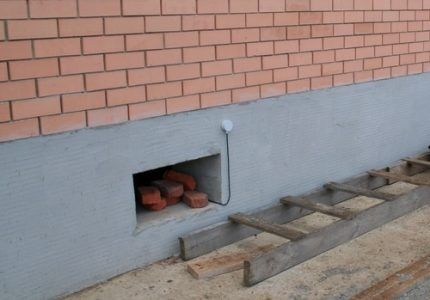
The room sensor reacts to changes in temperature in the room, then sends information to the automation system, which controls the boiler. And it already gives a signal to reduce or increase the heating power of the heating circuit.
The principle of operation is that the user must initially set the required temperature in the room, and the equipment itself will control the gas equipment.
The boiler will be turned on only if the air temperature in the heated room is lower than the previously set one. This way, you will reduce your monthly gas bill by about a third.
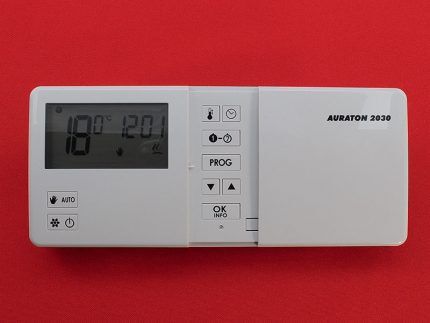
When selecting a temperature sensor, pay special attention to the temperature range. The best option would be from - 10 °C to + 70 °C. Also consider the threshold temperature. There are models that respond to a decrease in temperature by 1/4 degree.
This is not very convenient, since the boiler will often turn off. However, most operate when the temperature changes by 0.5 or 1 degree.
The dimensions of the device itself are generally small: 2x3 cm. In wired models, the cable length must be at least 5 m. If wireless communication is used, be sure to test the radio signal.
Rules and nuances automatic adjustments gas heating equipment are described in detail in the article, the material of which is entirely devoted to this issue.
Flame sensor - reliable protection of your boiler
One of the key guarantees of safe operation for a gas boiler is the flame sensor. Its main task is to send a signal about the extinguishing of the flame on the burner to the automation system as quickly as possible to shut off the gas in order to prevent its leakage and explosion of the entire device.Also, this sensor should inform the controller about the quality of gas combustion, the presence of flame, and the intensity of combustion.
Types of flame sensors
They depend on the method of flame control when operating a gas boiler. Control can be direct or indirect. Thermometric, photoelectric, ultrasonic, ionization and are direct methods.
Indirect control is considered to be control over the formation of carbon monoxide in the firebox, over the fuel pressure in the pipeline through which it enters, over the pressure force or its fluctuations in front of the burner. This also includes checking for an inexhaustible source of ignition.
Based on the thermoelectric control method, the sensor includes a thermocouple (it includes a sensor and a solenoid valve). The thermocouple is placed in close proximity to the boiler burner, and the solenoid valve is mounted on the gas pipeline through which gas is supplied to the burner being ignited.

Many modern devices install flame ionization sensors. Their operating principle is that when a flame burns, an ionization current occurs between the housing and the electrode of the sensor. It is formed in the event of attraction of ions. If there is no such current, then this becomes a signal to stop the gas supply.
If the combustion of the pilot flame produces the required amount of free electrons and negative ions, then the automation activates a key device that allows the operation of the main burner.
Please note that correct operation of the ionization sensor is only possible with an accurate phase connection of the heating boiler to the electrical network.
It is this mechanism that is much more effective than others in the case of gas combustion, since the gas does not actually produce light, so the photocell does not always react. The infrared radiation remains for a short time, which may be enough for a large amount of gas to accumulate, which automatically makes the infrared flame detector less safe.
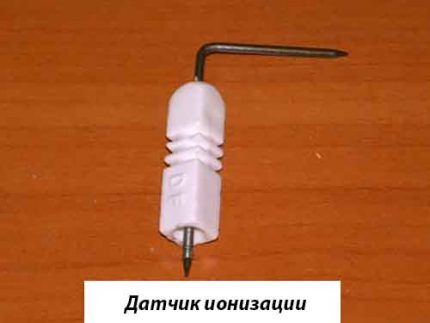
Photosensors control the flame of the key burner, but they are not used to diagnose the igniter flame due to the insufficient size of its flame. Such sensors are divided according to their response to the wavelength of the light flux: some respond to the visible and infrared spectrum of the light flux from a burning flame, while others “see” only its ultraviolet component.
To operate correctly, photocells must have “direct contact” with the burner flame, so they are mounted in close proximity to it. They are installed on the burner side at an angle to its axis of 20-30°. Because of this, photo sensors are susceptible to overheating by thermal radiation from the walls of the unit and heating through the viewing window.
In order to protect the photosensor from overheating, heat-resistant quartz glass and forced airflow are used, which is carried out either by low-pressure compressed air or by air produced by a fan.
The flame sensor may be triggered. when the key gas-air ratio is disrupted or the ignition device or valve becomes dirty.If the flame sensor breaks for any reason, it should be replaced immediately. This will save the life and health of you and your family.
Equipping gas heating equipment with a full set of safety sensors and automation devices does not eliminate the need for regular maintenance. How technical inspections and repairs of gas units are carried out is described in detail in the article we recommend.
Conclusions and useful video on the topic
Even more interesting information about sensors for boilers is in the videos below.
About different types of boilers and sensors suitable for them. The example shows the installation of a draft sensor.
Using an example, the author explains in detail the traction and temperature sensors: location, operating principles and useful subtleties.
A complete step-by-step test of the flame sensor at home and the features of its operation are demonstrated.
Sensors, if they are not included with the boiler, should be selected from the same manufacturer as the gas appliance. A malfunction of any of them threatens an accident or breakdown of the boiler, and therefore requires immediate intervention.
All the described sensors are used for one purpose - to protect the user of the gas boiler from accidents and life-threatening situations. The purchase of each of them is an investment in the safety of equipment, housing and human life.
Would you like to tell us how you selected sensors for your own gas equipment? Do you have useful information not mentioned in the article? Please write comments, share your opinion and information, and post photos related to the topic of the article in the block below.




My boiler is equipped with all the listed sensors, in addition, it measures the temperature outside.I somehow don't see the need for it.
Everything works properly, however, there are times when one or the other sensor is triggered. This is mainly due to pressure, then I add water to the system, or according to draft. The latter beeps especially often in foggy weather. It is convenient that the letter symbols of the problem light up on the boiler display, and the service book contains a decoding. Automation, of course, is a necessary thing.
It is not always possible to find all fault codes in the service book. Here I have a Baxi Mainfour 24 boiler with an open combustion chamber. So, about half of the faults in the service book are simply missing. And you have to visit such places in search of certain transcripts.
Who wrote THIS? “To determine the draft force, a draft sensor or thermostat for a gas boiler is used, which is also responsible for the correct combustion of gas.”
This is a bimetal sensor. plate (like in an electric kettle). Thanks to him, NOTHING will be withdrawn! And just t otkh. The temperature of the gas is heated by the sensor to 120 °C, it gives an alarm and turns off the GAS. Similar water overheating 95 oC.
The overheat protection sensor is also a bimetal plate, most often. And in the photo is the thermal resistance. Measuring t in the boiler. Sometimes 2 pieces for heating and 1 for hot water supply.
“Thanks to this small draft sensor, carbon monoxide will not enter the room, but will be removed through the chimney to the street.” It is thanks to the ingress of hot waste. gases to the sensor it is triggered. What 950 oC? Look at it - it says 120 oC!
Confused with fuel flash t. Add more calories to bimetal. plate. Don't confuse people, where did you see a 950°C traction sensor?
Hello, Oleg.Yes, you are right, the gas boiler draft sensor is a bimetallic relay that functions to turn the gas boiler on and off. There is a thermal relay mounted inside, and there is also a metal strip - it is this that reacts to temperature changes.
As for temperatures, they depend on the type of fuel: natural gas - temperature range 75-950 °C, liquefied gas - temperature range 75-1500 °C. That is, it is possible to configure the sensor to respond in these ranges. This does not mean that it will necessarily be set to the maximum indicator.
There are sensors that operate in a smaller range. For clarity, I am attaching a photo.